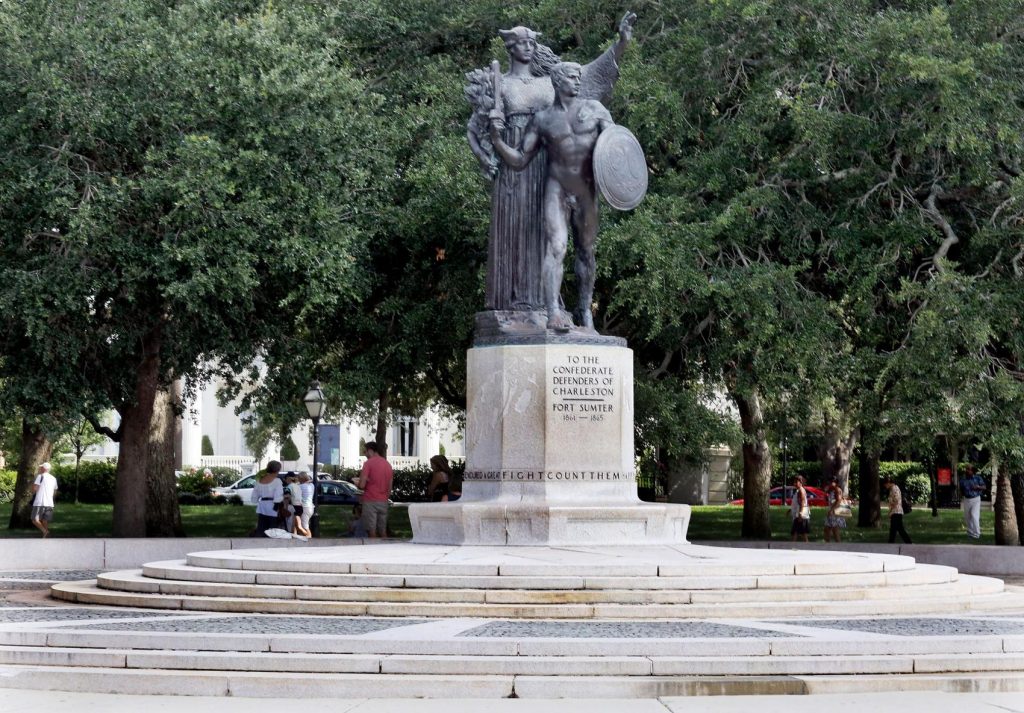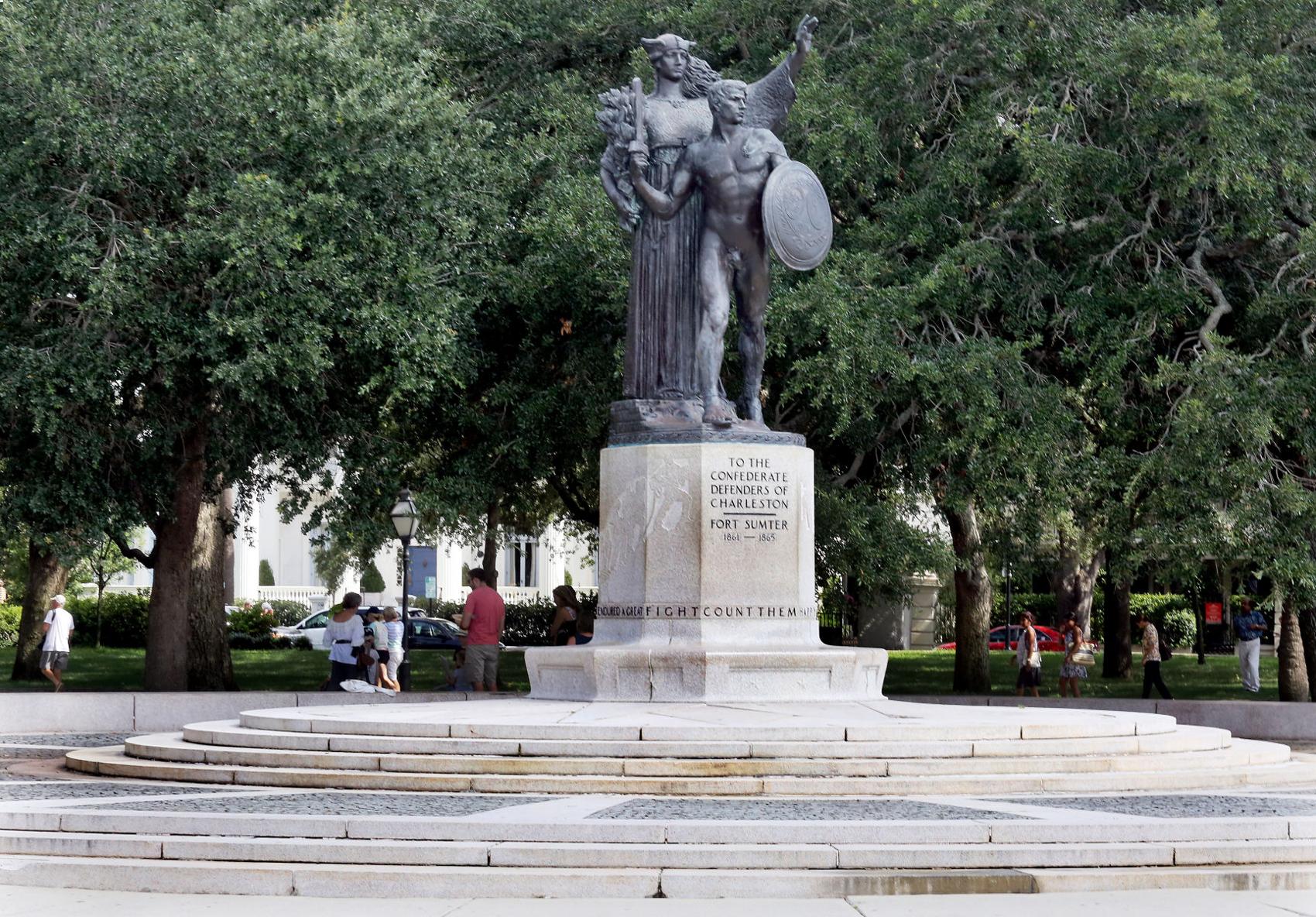SOUTH CAROLINA: Most Confederate Monuments Remain After Emmanuel Church Shooting

The Charleston Defenders of the Confederacy monument at White Point Garden is one of three prominent Confederate memorials in the city. Brad Nettles/Staff
About 110 Confederate monuments and designations have been removed from the national landscape in recent years, but a new survey shows many more remain.
The Southern Poverty Law Center released a report Monday that identifies 1,728 Confederate monuments, street names and other symbols still in public spaces, mostly in the South but also in other states. Its 2016 report found 1,502.
The new list includes 192 in South Carolina and 10 in the Charleston area, seven of which are James Island streets named after Confederate leaders.
The center, which fully supports removing Confederate monuments and names, began compiling and publicizing its list after Dylann Roof, a white supremacist who posed with the Confederate battle flag, shot and killed nine black worshippers inside Charleston’s Emanuel AME Church in June 2015.
“Roof did not spark a race war. Far from it,” the center said in a release. “Instead … Roof ignited something else entirely: a grassroots movement to remove the flag from public spaces.”
The S.C. Legislature was among the first to act shortly after the shooting, voting to remove the flag from a Confederate memorial on the Statehouse grounds.
Since then, Alabama removed several versions of Confederate flags near its capitol, and the city of Memphis removed a statue of Nathan Bedford Forrest, a Confederate general also known for leading the Ku Klux Klan after the Civil War.
New Orleans removed three Confederate statues and another commemorating a revolt against Reconstruction.
Nationwide, 110 monuments and other symbols of the Confederacy have been removed, the center said.
Charleston has three major monuments on the center’s list, including the Charleston Defenders of the Confederacy monument at White Point Garden, the Washington Light Infantry obelisk in Washington Square and the Wade Hampton monument in Marion Square.
But South Carolina’s most debated monuments didn’t make the list because they honor figures who weren’t directly involved in the Confederacy. These include the John C. Calhoun monument at Marion Square and Ben Tillman Hall at Clemson University. Calhoun was a leading defender of slavery, while Tillman helped banish African-Americans from politics in the state after the war.
The center’s list also doesn’t list the Confederate flag displayed inside The Citadel’s Summerall Chapel, which also has been a focal point in the ongoing debate.
While South Carolina removed the flag from the Statehouse grounds, its Heritage Act, which passed in 2000, shuts down the ability of cities, counties and schools to remove or alter any war memorials without the Legislature’s blessing.
Georgia, Mississippi, Tennessee and Virginia also have state laws protecting monuments, the center said.
A pending lawsuit questions whether the Heritage Act can block efforts to alter a Greenwood War Memorial by removing racial references to the deceased soldiers it honors.
“The effort to remove them is about more than symbolism. It’s about starting a conversation about the values and beliefs shared by a community,” the center said. “It’s about understanding our history as a nation.”
–postandcourier.com
###



